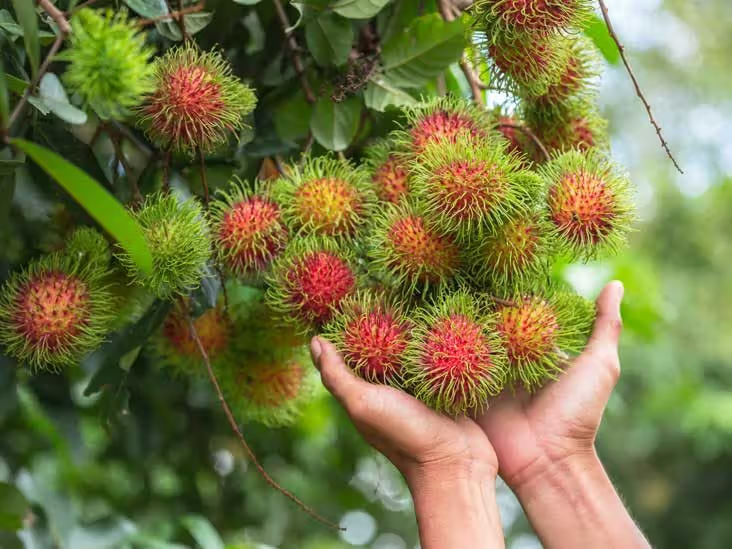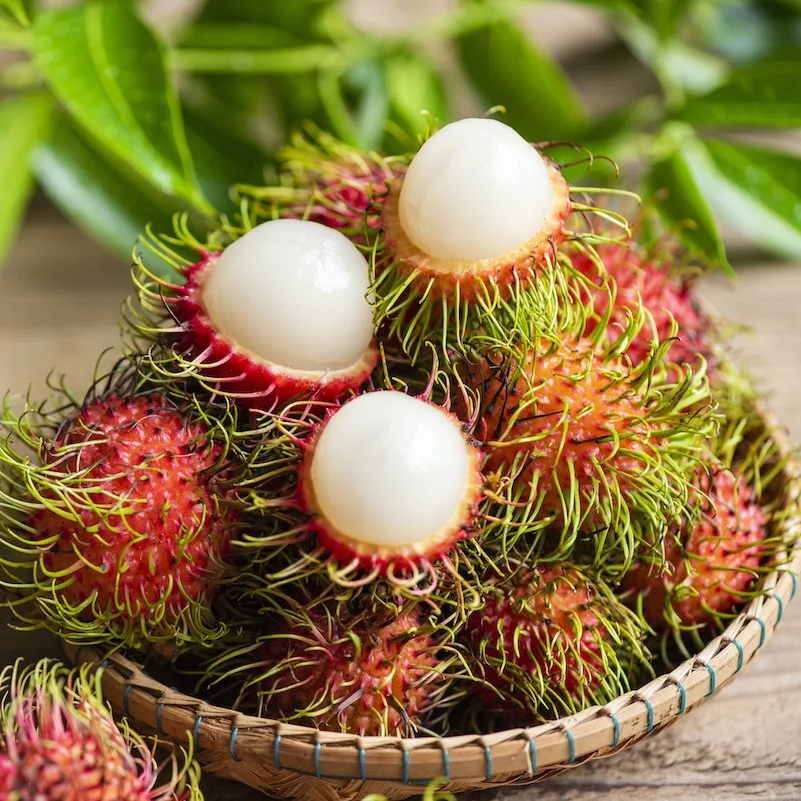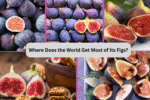Among the world’s most exotic and visually striking tropical fruits, the rambutan stands out for its hairy red exterior and sweet, juicy flesh. Native to Southeast Asia, this unique fruit has delighted palates for centuries and remains a staple in many Asian cuisines and markets. While several countries cultivate rambutan, one nation consistently leads the world in its production.
So — which country is famous for producing the most rambutans? In this article, we’ll explore the origins of the rambutan, global cultivation patterns, and reveal which country claims the top spot in rambutan production, along with other major contributors to the world’s supply.
What Is Rambutan?

Rambutan (Nephelium lappaceum) is a tropical fruit native to Southeast Asia. It belongs to the same botanical family as the lychee and longan and shares a similar texture and flavor. The name “rambutan” comes from the Malay word ‘rambut,’ meaning hair, a nod to the fruit’s hairy, spiky outer skin.
Inside the colorful rind is a translucent, sweet, and mildly acidic flesh surrounding a single seed. Rambutan is prized for its:
- Rich vitamin C content
- Minerals like iron and potassium
- Antioxidant properties
It’s often eaten fresh, added to fruit salads, made into jams, or canned in syrup.
The Origins of Rambutan

Rambutan trees thrive in humid, tropical climates with consistent rainfall. The fruit is believed to have originated in Malaysia and Indonesia, where it has been cultivated for thousands of years. From there, it spread across Southeast Asia and into other tropical regions of the world.
Today, rambutans are grown in several countries in Asia, Africa, and Central America, but the largest and most famous producer remains the country where this fruit was first domesticated.
Which Country Is Famous for Producing the Most Rambutans?
Indonesia — The World’s Leading Rambutan Producer
Indonesia holds the title as the largest and most famous producer of rambutans in the world. The fruit is native to the Indonesian archipelago and remains deeply rooted in its culture, cuisine, and agricultural economy.
Why Indonesia Leads:
- Ideal Tropical Climate: Indonesia’s consistent rainfall, fertile volcanic soil, and warm temperatures provide perfect growing conditions.
- Diverse Rambutan Varieties: Over 30 locally known varieties are cultivated in the country, each with unique flavors and textures.
- Cultural Popularity: Rambutans are highly popular in local markets and rural areas, enjoyed both fresh and as part of traditional desserts.
Key Producing Regions: West Java, Sumatra, Bali, and Kalimantan.
Contribution: Estimates suggest Indonesia produces well over 500,000 metric tons of rambutan annually, making it the undisputed leader in global supply.
Other Major Rambutan Producing Countries

While Indonesia is the largest, several other nations are significant players in rambutan cultivation and supply both domestic and international markets:
Thailand
Thailand is the second-largest producer of rambutans globally. The country’s eastern provinces, like Chanthaburi, Rayong, and Trat, are famous for producing high-quality rambutans that are popular both locally and for export.
Uses: Consumed fresh, canned, or turned into jams and sweets.
Export Markets: China, Malaysia, Singapore, and the Middle East.
Estimated Production: Between 350,000–400,000 metric tons annually.
Malaysia
Malaysia, considered one of the rambutan’s original homelands, is another leading producer. While most of its rambutans are consumed domestically, Malaysia is known for cultivating unique, flavorful varieties like Rambutan Anak Sekolah and Rambutan Gading.
Key Producing States: Johor, Pahang, Selangor, and Perak.
Estimated Production: Around 200,000–250,000 metric tons annually.
Philippines
In the Philippines, rambutans flourish in tropical lowland areas, particularly in Mindanao and the Southern Tagalog regions. The fruit is highly favored in local markets and is also occasionally exported to nearby countries.
Estimated Production: Approximately 70,000–100,000 metric tons annually.
Vietnam
Vietnam has recently increased its rambutan cultivation, particularly in the Mekong Delta, where the climate is highly conducive to tropical fruit farming.
Estimated Production: Around 50,000 metric tons annually, with significant exports to China.
Estimated Global Rambutan Production (Top 5)

| Rank | Country | Estimated Annual Production (Metric Tons) |
|---|---|---|
| 1 | Indonesia | 500,000+ |
| 2 | Thailand | 350,000–400,000 |
| 3 | Malaysia | 200,000–250,000 |
| 4 | Philippines | 70,000–100,000 |
| 5 | Vietnam | 50,000+ |
Where Does the World Get Its Rambutans?
Fresh rambutans are primarily distributed and consumed within Southeast Asia due to their perishable nature. However, thanks to advancements in cold-chain logistics and canning, rambutans are now exported worldwide, especially to:
- China
- United Arab Emirates
- Singapore
- Hong Kong
- United States
- Canada
- Australia
The bulk of global rambutan exports originate from Thailand, Indonesia, and Vietnam.
Why Is Rambutan So Popular Globally?

Several reasons have contributed to the growing global demand for rambutan:
- Unique Appearance: Its hairy red shell makes it one of the most visually appealing tropical fruits.
- Sweet, Juicy Flesh: Similar in texture to lychee but with a distinct, aromatic flavor.
- Nutritional Benefits: High in vitamin C, fiber, iron, and antioxidants.
- Culinary Versatility: Consumed fresh, in desserts, or as canned fruit in syrup.
- Cultural Appeal: Important in Asian festivals, markets, and traditional medicine.
Challenges in Rambutan Production
Despite its popularity, rambutan farming faces several challenges:
- Perishability: Fresh rambutans spoil quickly, limiting long-distance transport.
- Seasonality: Typically harvested twice a year, leading to supply fluctuations.
- Pest and Disease Risks: Susceptible to fruit borers and fungal diseases.
- Labor-Intensive Harvesting: Requires careful handling to preserve fruit quality.
Conclusion: Which Country Is Famous for Producing the Most Rambutans?
To conclude — Indonesia is not only the native home of the rambutan but also the world’s most famous and largest producer. Its ancient cultivation practices, ideal climate, and diverse varieties give Indonesia a natural advantage in both quantity and quality of rambutan production.
Thailand and Malaysia closely follow, with their own thriving industries and rich cultural ties to the fruit. As rambutan continues to gain international popularity as a health food and tropical delicacy, these Southeast Asian countries will remain the primary sources of this exotic, sweet, and nutrient-packed fruit.




Leave A Comment